
Background information
Why does espresso taste so much better in Italy?
by Martin Jungfer

The small coffee roastery outside of Zurich places considerable value on personality. Whether that's within the team, in its contact with farmers or when it comes to the beans themselves.
It's snowed. The fields are covered, the trees have been dusted, and only the dark asphalt of the road stands out from the white landscape. Our destination is on this street in Ebmatingen. White chimney smoke rises from the inconspicuous house and wafts a powerful fragrance into the clear air. It smells of cocoa, of roasting aromas, of a warm, inviting living room where you want to escape the cold outside.
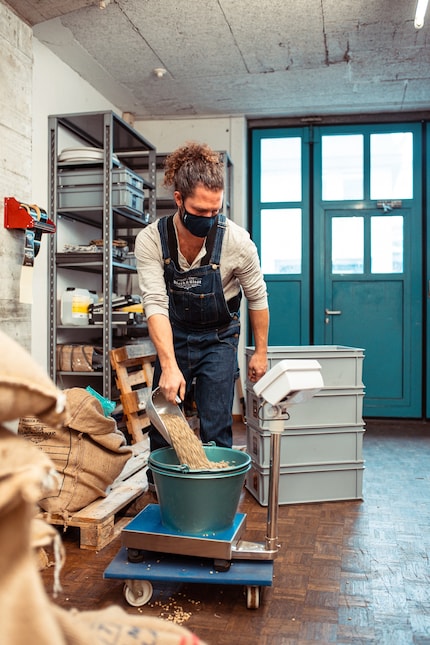
Black & Blaze is the business responsible for this heady scent. But it's not a chocolate factory; it's a micro coffee roastery. Inside, the aroma is softer and, visually, everything screams «coffee». There are sacks of green coffee beans from all over the world, coffee machines, grinders and freshly brewed filter coffee. «That's my personal favourite,» says Liri, a long-time team member and Claude's partner. «It's smooth, with fruity notes and above all a complex flavour. Not to be confused with the filter coffee that your grandma used to make.» The beans have been the subject of many experiments and unsuccessful roasting trials.
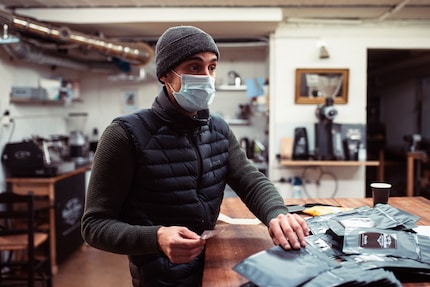
It all started ten years ago with a trip. Founder Claude has travelled all over the world as a photographer. Including South Africa, where he stumbled across a micro roastery that also makes filter coffee. He was so inspired that he set up his own small roastery back in Switzerland, founding Black & Blaze. Liri joined around three years later. And they've been continually improving their theoretical and practical knowledge ever since. Black & Blaze has grown to include a large team. «It takes each and every one of us to make our coffee what it is,» adds Liri.
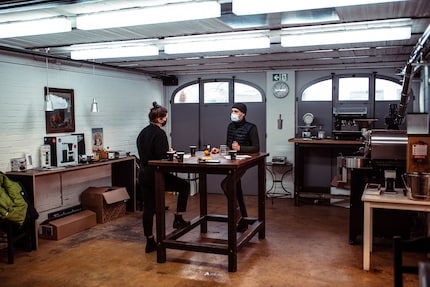
«Coffee beans are a natural product. No two crops are the same and different varieties are even more diverse. So, as roasters, we have to treat each batch individually to get the best out of it,» Liri tells us. Operating the roaster, colleague Roni shows exactly what that means: listening to the beans. «When we're roasting, there's something called the first crack when the first beans gently break open, and we don't want to miss it,» explains Roni. «Then – depending on the level of roast you're looking for – the beans stay in the roaster for a few more minutes before they're cooled. The machine performs meticulous time and temperature checks, while the operator brings experience and individuality. This combination is the only way to achieve the quality we want,» explains Liri.
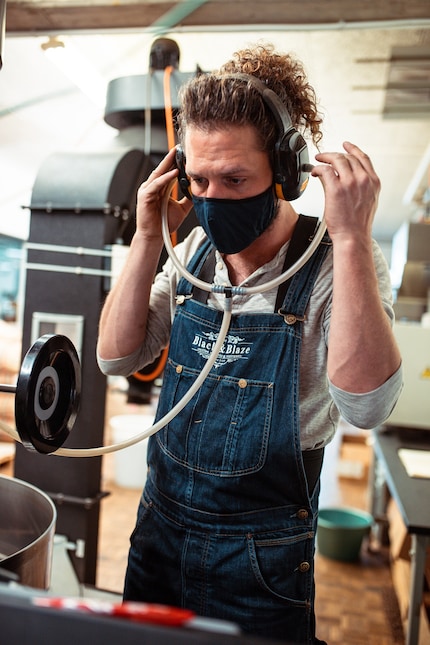
Its slogan – Best Coffee in Town – shows how important that is. What might sound boastful at first is more self-motivation. «We always have to keep our sights on what we promise our customers, the quality that each and every bag of coffee has to deliver,» says Liri. Alongside the properties of the harvested beans, what they'll be used for also has to be considered. Is the blend going to be used for filter coffee, a portafilter machine or an automated machine? «Black & Blaze uses the highest-quality beans for filter coffee and the roast is really light so that all the aromas come out and nothing is burnt. Ultimately, filter coffee has more in common with tea than espresso.» Beans for espresso are left in the roaster for longer to give it the stonger notes it needs. And what about coffee for machines? «As a natural product, the coffee fruit for that never has the complexity of what we use for filter coffee.»
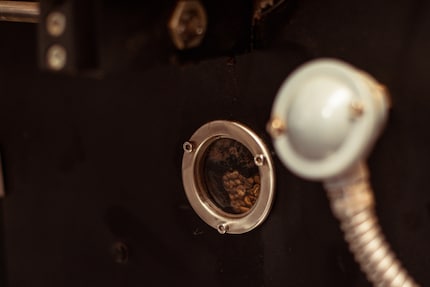
This fruit doesn't come from snowy Switzerland; it's sourced from countries between the tropics. Black & Blaze gets its as-fair-trade-as-possible coffee beans from traditional coffee producing areas like Ethiopia, Honduras and Brazil, as well as less well-known places like India, where they work directly with family businesses. «My search for the world's best raw coffee took me to eastern India and Ararku in the Eastern Ghats mountain range. Under British colonial rule, Adivasi farmers were paid a handful of rupees and made to take the coffee they had prepared to state collection stations, where the worst-quality raw product found its way onto the global market. After the end of British rule, the stations disappeared and with them the poor pay. Around ten years ago, the «Naandi Foundation» began to create closer links between individual families and the craft of biodynamic coffee cultivation. Success didn't take long. The harvests took the world of speciality coffee by storm,» explains Liri.
These coffee beans come to the Swiss roastery in shipping containers directly from the farm.
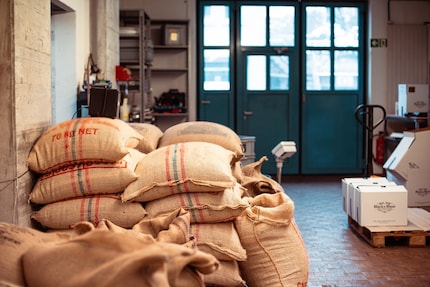
This long journey has now almost been forgotten. Coffee has been a part of our identity for so many years, from its beginnings as an aristocratic luxury item to its distribution through coffee houses and its current status as a ubiquitous stimulant. We're already in the third wave of coffee culture, as our colleague Simon Balissat wrote. It's defined by the quality, complexity and individuality of both the coffee and the people who drink it. Coffee is processed and consumed here, but what comes before can be hard to influence. «Today's increased interest in social and environmental responsibility should result in at least some insight into the enormous coffee market,» says Liri. Labels promise that the farmers are treated and paid properly and that the fruit isn't grown in environmentally-damaging monocultures or using water-intensive cultivation in areas where water is scarce. Black & Blaze places a lot of value on trading its coffee as fairly as possible. This is why the business regularly joins the farms' quality control juries to evaluate the result of the harvest and work with the farmers to optimise processes where necessary. «Nevertheless, coffee has long been a huge market that isn't consistently transparent, which is why we are so interested in self-imported coffee.»
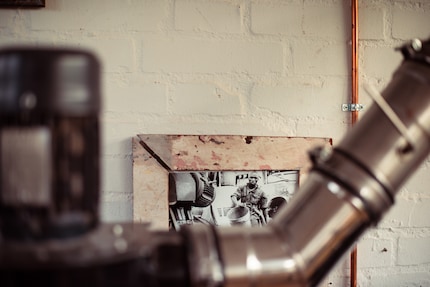
But this direct contact with farmers isn't just important for fair trade; it also has personal value. «Someone from the team visits one of our partner farms every year. The contact is enjoyable and instructive for both parties,» adds Liri. «We see how the farmers work, how the whole family helps, how proud they are of their product. And the farmers feel that they're taken seriously and see where their goods go and what happens to them.» Roni is packing the results of the roasting stage into branded black 250 g bags. «I do this from time to time. But I always set a timer so I don't miss any stage of the roasting process.» The bags travel down a blue conveyer belt into cardboard boxes on a homemade wooden frame. A trio of colourful collages hangs on the white wall. It's a personal touch in the roasting room.
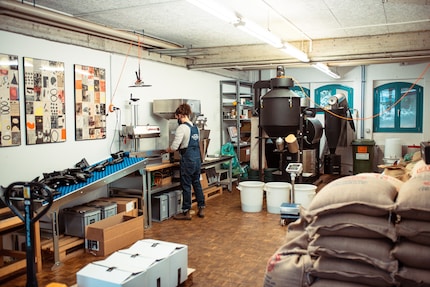
The mix of a homely atmosphere, inventive charm, quality standards and economic ambition seems to work. At one of many events that they've attended over the years, they met and got talking to renowned chef Andreas Caminada. «He told us about his project at Schloss Schauenstein, that he prefers to use local products and therefore integrated his own bakery and that he'd also love to have his own coffee. So, the project got underway and Monika has been roasting on site at Schloss Schauenstein in Fürstenau in the canton of Graubünden for a while now.»
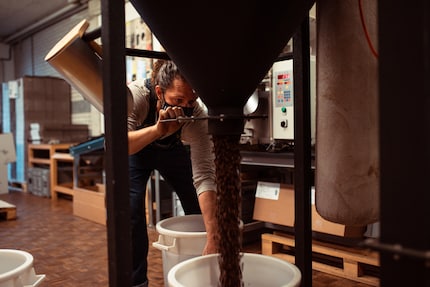
Back in Ebmatingen, roaster Roni has reached the final stage of the process. The room is warm and the scent of the different finished coffee blends fills the air. Liri removes what look like woodchips from a chinmey-like container on the roaster. «Just in time. The thin dried skins of the coffee beans fall off during roasting and land in here. If they're not emptied out regularly, they clog up the chinmey and get hotter and hotter until they ignite, and – in the worst case scenario – would set light to the whole roastery,» he exaggerates. There's an especially high number of skins today, as they've almost exclusively been roasting with washed beans. «There are other ways to prepare them. They're only washed in areas where water is abubdant. Most of the skins stay on washed beans, resulting in more organic waste after roasting. If we use other methods, like drying, most of the skins come off during the process.»
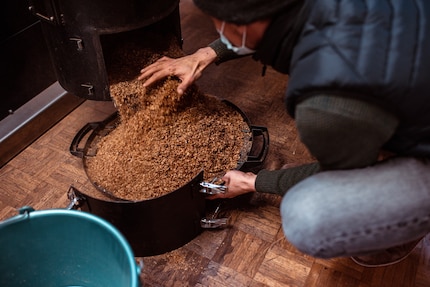
Meanwhile, the last of the beans that have been cooled in the drums are sucked up into an air duct so they can be fed into white containers. Like the rest of the roasting process, it's a rather loud business. «When I get home after a roasting day, I have to lie on the sofa in silence for half an hour before I can do anything else,» adds Roni. You must be desperate to get the clattering and rattling out of your head. No-one can get enough of the coffee though. A few cans of filter coffee are snapped up for personal use each day. Understandable if you're surrounded by the gentle aroma of roasted beans all day long. And, on a cold day, nothing warms you up as well as a cup of your own coffee.
My life in a nutshell? On a quest to broaden my horizon. I love discovering and learning new skills and I see a chance to experience something new in everything – be it travelling, reading, cooking, movies or DIY.
Interesting facts about products, behind-the-scenes looks at manufacturers and deep-dives on interesting people.
Show all